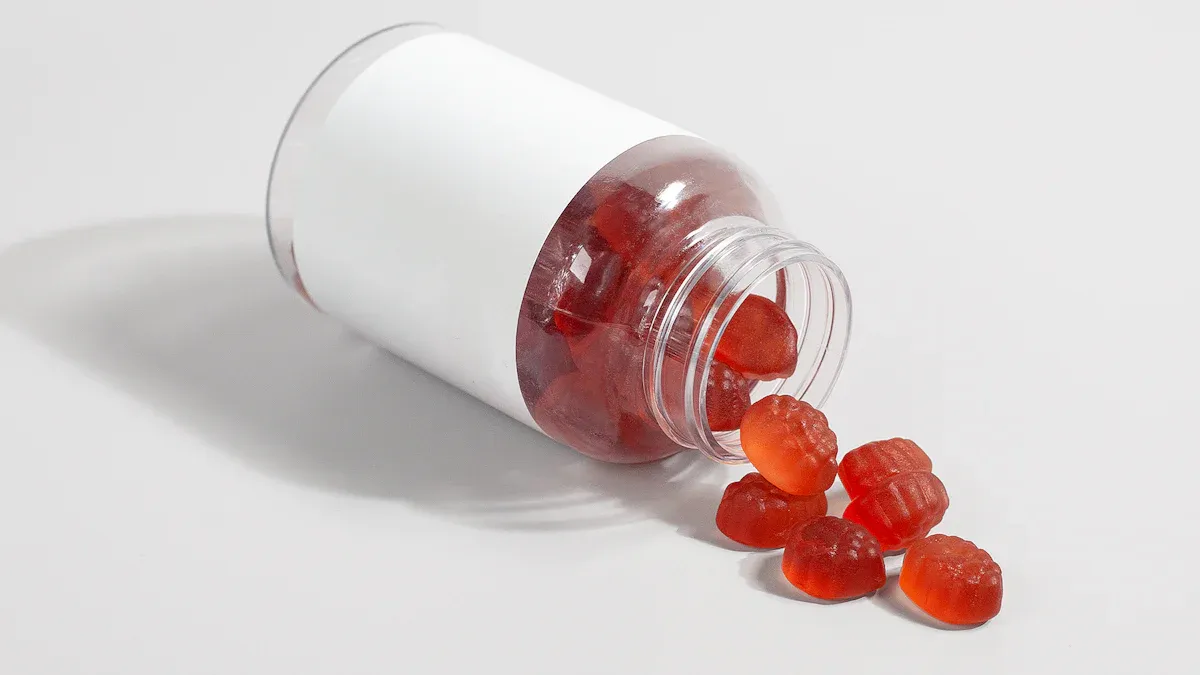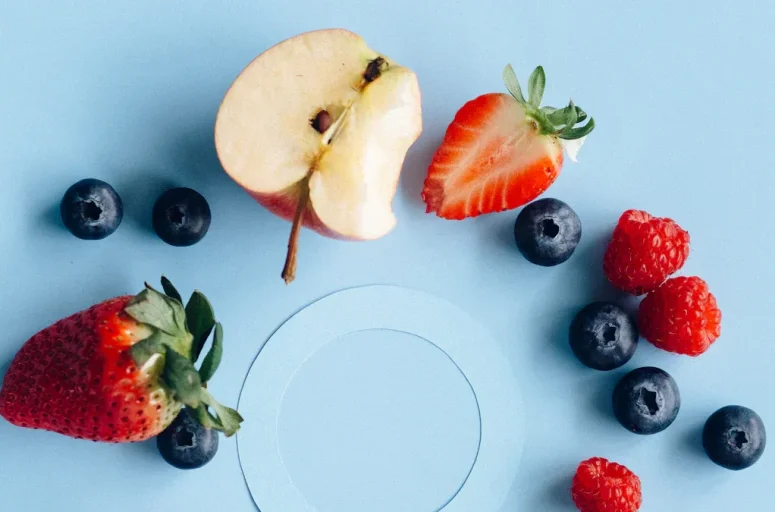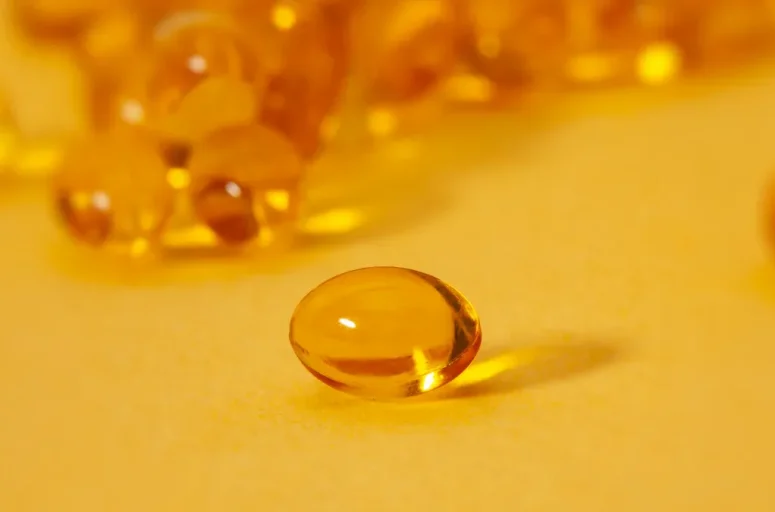
Choosing the right iron supplement is very important for health. Iron helps your body make hemoglobin. Hemoglobin carries oxygen to your cells. Without enough iron, you may feel tired or weak. You might also notice pale skin. Some iron types can raise hemoglobin and ferritin levels fast. This can improve your health in just weeks. But not all iron supplements work the same way. Some can cause nausea or constipation. These side effects make it hard to keep taking them. Knowing how iron is absorbed helps you pick the best one.
Key Takeaways
Iron helps make hemoglobin, which moves oxygen in your blood. Without enough iron, you might feel tired and weak.
Pregnant women, people with heavy periods, and vegetarians often need iron supplements to stay healthy.
Ferrous iron is absorbed better by the body than ferric iron. Pick ferrous sulfate, gluconate, or fumarate for good results.
Eating foods with vitamin C, like oranges or peppers, helps your body absorb iron. Avoid dairy and coffee when taking iron.
Start with a small amount of iron to avoid side effects like nausea or constipation. Slowly increase the dose as your body gets used to it.
Blood tests can check your iron levels and make sure your supplements are working.
Liquid iron is a good choice if you can’t swallow pills. It may also be easier on your stomach.
Talk to a doctor to find the best iron supplement for you. They can help choose the right type and amount for your health.
Why Iron Supplements Matter
How Iron Helps Your Body
Moving Oxygen and Making Hemoglobin
Iron is very important for your body. It helps move oxygen through your blood. Hemoglobin, a protein in red blood cells, carries oxygen from your lungs to the rest of your body. Without enough iron, your cells don’t get the oxygen they need to work well. Studies show low iron can harm cells, cause stress, and worsen health problems like aortic dissection.
Iron also helps your muscles by storing oxygen in myoglobin, a muscle protein. This gives your muscles energy for activities. Iron is also needed to make strong connective tissues. These tissues keep your body strong and flexible.
Energy, Fighting Illness, and Brain Health
If you don’t have enough iron, you may feel tired all the time. This happens because your cells can’t make enough energy without oxygen. Iron also helps your immune system fight sickness. It’s important for your brain too. Iron helps your brain grow, make hormones, and stay sharp. It helps with memory, focus, and thinking clearly.
Signs of Low Iron Levels
Feeling Tired, Weak, or Looking Pale
Low iron can make you feel very tired or weak. Even if you sleep well, you might still feel exhausted. Pale skin is another sign of low iron because your body isn’t making enough red blood cells. You might also feel dizzy, get headaches, or have trouble breathing when active.
Changes in Nails and Hair
Low iron can change how you look. Your nails might break easily, and your hair could thin or fall out. Some people get dry skin or restless legs. These signs mean your body isn’t getting enough iron to stay healthy.
Group | How Common is Iron Deficiency Anemia? |
|---|---|
Adult Men | |
Non-Hispanic White Women | 9-12% |
Black and Mexican-American Women | Nearly 20% |
People Over 65 Years Old | 9% (higher risk with stomach cancer) |
Who Needs Iron Supplements
Pregnant Women and Those with Periods
Pregnant women need more iron for their baby and extra blood. Taking iron during pregnancy can stop anemia and keep both mom and baby healthy. People with periods also lose iron each month and can benefit from supplements.
Vegetarians, Vegans, and Special Diets
If you don’t eat meat, you might not get enough iron. Plant-based iron is harder for your body to use than iron from meat. Taking a supplement can help you get the iron you need.
People with Anemia or Long-Term Illnesses
People with anemia or certain illnesses often have low iron. For example, kids with hard-to-treat anemia can improve with iron treatments. Fixing anemia in kids and teens helps them grow and stay healthy. It also helps communities by improving overall health.
Types of Iron Supplements and Their Absorption
Ferrous vs. Ferric Iron
How they differ and how your body absorbs them
Iron supplements come in two types: ferrous and ferric. Ferrous iron has Fe²⁺ ions, while ferric iron has Fe³⁺ ions. Your body absorbs ferrous iron better because it dissolves more easily. Ferric iron needs extra steps in your stomach to become usable. This makes ferric iron slower and less effective for raising iron levels.
Studies show ferric sulfate, a common ferric type, is harder to absorb. This means your body gets less iron from it, making it less helpful for fixing low iron levels.
Why ferrous iron is usually recommended
Ferrous iron is the most common choice for iron pills. It absorbs faster and works better. Doctors often suggest ferrous types like ferrous sulfate, ferrous gluconate, or ferrous fumarate. These are easy to find and work well for treating iron deficiency anemia.
Common Forms of Oral Iron Supplements
Ferrous sulfate: Pros, cons, and absorption
Ferrous sulfate is one of the most popular iron pills. It has about 20% elemental iron, which helps boost iron levels. But it can cause nausea, constipation, or upset stomach. Even with these side effects, it’s affordable and widely available, making it a top choice.
Ferrous gluconate: Pros, cons, and absorption
Ferrous gluconate has 12% elemental iron, less than ferrous sulfate. Some research says it might absorb better, but you may need higher doses. It’s gentler on the stomach, so it’s good for people who get side effects from other types.
Ferrous fumarate: Pros, cons, and absorption
Ferrous fumarate has the most elemental iron at 33%. This makes it strong for treating severe iron deficiency. However, its high iron content can cause more stomach problems.
Iron Supplement Type | Elemental Iron Content (%) |
|---|---|
Ferrous Fumarate | 33% |
Ferrous Sulfate | 20% |
Ferrous Gluconate | 12% |
Liquid iron supplements: Benefits and drawbacks
Liquid iron is great for people who can’t swallow pills. It’s easy to measure doses and is often gentler on the stomach. But it can stain teeth and taste bad. These are often used for kids or people with special health needs.
Iron polysaccharide complexes: Who should use them
Iron polysaccharide complexes are a newer type of iron pill. They release iron slowly to avoid stomach problems. These are good for people with sensitive stomachs or trouble taking regular iron pills.
Prescription vs. Over-the-Counter Iron Supplements
When you need prescription iron
Prescription iron is for serious anemia or when store-bought pills don’t work. These often have higher doses or special mixes, like iron with zinc or vitamin C, to help absorption.
Comparing doses and types
Over-the-counter pills like ferrous sulfate or ferrous gluconate work for mild anemia. Prescription options may include ferrous fumarate with zinc and vitamin C for better absorption. Studies show both types improve hemoglobin equally, but prescriptions can be tailored for specific needs.
Iron Formulation | Hb Improvement | Notes |
|---|---|---|
Ferrous Sulfate | Commonly used and supported by medical guidelines. | |
Ferrous Fumarate with Zinc and Vitamin C | No significant difference | Limited studies make it hard to compare organic iron types. |
Factors That Affect Iron Absorption
Timing and Dosage
Best times to take iron for better absorption
When you take iron pills matters a lot. Morning is the best time because your body’s hepcidin levels are lower. Hepcidin is a hormone that blocks iron absorption. To get the most iron, take your pill one hour before eating or two hours after meals. This keeps food from stopping iron absorption.
Splitting doses to reduce side effects and improve absorption
If iron pills upset your stomach, try smaller doses. Taking iron every other day instead of daily can help your body absorb it better. Research shows lower doses, like 40-80 mg, work best for absorption.
Study | Findings |
|---|---|
Iron absorption from supplements is greater with alternate day than with consecutive day dosing in iron-deficient anemic women | Fractional iron absorption was higher during alternate day dosing compared to consecutive day dosing. |
Lower doses and avoiding twice-a-day pills improve absorption.
Taking 40-80 mg of iron every other day is suggested.
Food and Drink Interactions
Foods that help your body absorb iron
Eating foods with vitamin C can help your body use iron better. Vitamin C grabs non-heme iron (the kind in pills) and makes it easier to absorb. Foods like oranges, strawberries, and bell peppers are great choices. Eating these with your iron pill can help you absorb more iron.
Food Type | Effect on Iron Absorption |
|---|---|
Vitamin C-rich foods | Help your body absorb more iron by making non-heme iron easier to use. |
Foods like citrus fruits and bell peppers are good to eat with iron pills. |
Foods and drinks that block iron absorption
Some foods and drinks can stop your body from absorbing iron. Dairy products and calcium-rich foods are common blockers. Calcium fights with iron in your stomach, so don’t eat them together. Drinks like coffee and tea also block iron because they have tannins. To get the most iron, wait a few hours before having these foods or drinks.
Food Type | Effect on Iron Absorption |
|---|---|
Dairy and calcium-rich foods | Block iron absorption; avoid eating them with iron pills. |
Calcium’s blocking effect is short-term; spacing intake helps absorption. |
Individual Factors
How stomach acid helps absorb iron
Your stomach acid helps your body absorb iron. Acid breaks down iron, making it easier to use. If you take antacids or have low stomach acid, your body might absorb less iron. You may need a different iron pill or advice from a doctor.
Health problems that lower iron absorption
Some health issues can make it hard for your body to absorb iron. For example, celiac disease harms your small intestine, where iron is absorbed. Other conditions, like inflammatory bowel disease, can also block absorption. If you have these problems, talk to your doctor about how to get enough iron.
Factor | Weighted Mean Difference (WMD) | 95% Confidence Interval (CI) | Heterogeneity (I2) | p-value for Heterogeneity |
|---|---|---|---|---|
-5.91 | -8.38, -3.44 | 84% | <0.0001 | |
Meals Only | -1.02 | -3.77, 1.73 | N/A | N/A |
Supplements | -7.90 | -11.4, -4.3 | N/A | N/A |
Choosing the Right Iron Supplement for Your Needs
Checking Your Iron Levels
Why blood tests and doctors are important
Knowing your iron levels is the first step to fixing low iron. Blood tests show how much iron your body has and how bad the problem is. Doctors often check ferritin and hemoglobin levels. Ferritin shows stored iron, while hemoglobin shows how well your blood carries oxygen.
Seeing a doctor helps you get the right treatment. For example, during pregnancy, doctors suggest checking for anemia. The World Health Organization (WHO) says ferritin is a good test for low iron but needs extra tests if there’s inflammation.
Source | Evidence Type | Key Recommendations |
|---|---|---|
American Gastroenterological Association (AGA, 2020) | Guidelines | Use a cutoff of 45 ng/mL for ferritin to diagnose iron deficiency. |
American College of Obstetricians and Gynecologists (ACOG, 2021) | Guidelines | Screen all pregnant individuals for anemia and evaluate causes if criteria are met. |
World Health Organization (WHO, 2020) | Guidelines | Ferritin is a good marker for iron deficiency but not for iron overload. |
What ferritin and hemoglobin levels mean
Ferritin below 45 ng/mL often means low iron. Low hemoglobin can mean anemia, which makes you tired and weak. Regular tests help track progress during treatment. If you have health problems like kidney disease, your doctor may test more often to adjust your iron plan.
Handling Side Effects
Dealing with nausea, constipation, and other problems
Iron pills can upset your stomach, causing nausea or constipation. These problems make some people stop taking them. To feel better, start with a small dose and slowly increase it. Taking iron with food can help, but it might lower absorption a little.
If side effects don’t go away, try a different type of iron. Liquid iron or slow-release pills are easier on the stomach. In serious cases, doctors may suggest iron through an IV. Studies show 70% of people have stomach issues with iron pills, but managing them can help you stick to treatment.
Tips to reduce side effects:
Take iron with vitamin C to absorb it better.
Avoid calcium-rich foods or drinks when taking iron.
Choosing gentle options for sensitive stomachs
If your stomach is sensitive, try carbonyl iron or iron polysaccharide pills. These release iron slowly, so they’re less likely to upset your stomach. Liquid iron is another option, especially for kids or people who can’t swallow pills.
Finding the Right Supplement for You
Comparing liquid, tablet, and chewable options
Iron supplements come in different forms to fit your needs. Tablets are the cheapest and most common. Liquid iron works for people who can’t swallow pills. Chewable iron is easy and convenient. Each type has pros and cons, so pick one that works best for you.
Iron Supplement Formulation | Key Characteristics | Population Considerations |
|---|---|---|
Ferrous Sulfate | High bioavailability, economical | Commonly used for mild deficiencies in high-income countries. |
Carbonyl Iron | Gentle absorption, pure form | Suitable for sensitive individuals, well-tolerated. |
Heme and Non-Heme Iron | Minimizes side effects, versatile | Effective for diverse populations, flexible intake options. |
Options for vegans and people with allergies
If you’re vegan or have allergies, look for vegan or allergen-free iron pills. These use plant-based ingredients and avoid things like gluten or dairy. Special blends like heme and non-heme iron work for different needs, giving you safe and healthy iron choices.
Tips for Better Iron Absorption and Fewer Side Effects
Combining Iron with Vitamin C
How vitamin C helps your body absorb iron
Vitamin C makes it easier for your body to use iron. It changes non-heme iron (from plants and supplements) into a form your body can absorb better. This helps you get more iron, especially if you eat mostly plant-based foods. Research shows that adding vitamin C to your iron intake improves how much your body absorbs. It’s a simple way to make sure you get the most from your iron.
Foods with vitamin C to eat with iron
Eating foods high in vitamin C can help your body absorb iron. Oranges, strawberries, bell peppers, and broccoli are great options. For example, drink orange juice with your iron pill to make it work better. You can also eat iron-rich foods like spinach with a salad that has lemon juice. These small changes can help your body use iron more effectively.
Avoiding Things That Block Iron Absorption
Keeping iron away from calcium or dairy
Calcium and dairy can stop your body from absorbing iron well. Calcium fights with iron in your stomach, so your body gets less iron. To fix this, take your iron pill two hours before or after eating dairy like milk or cheese. Studies show that too much calcium can lower iron absorption a lot, so keep them separate for better results.
Drinking less tea and coffee near iron time
Tea and coffee have tannins that block iron absorption. If you drink them close to taking your iron pill, they can make it less effective. To help your body absorb more iron, avoid tea and coffee for at least an hour before and after your pill. Instead, drink water or orange juice to help your body use the iron better.
Food/Drink Type | Effect on Iron Absorption |
|---|---|
Calcium-rich foods | Lowers absorption a lot |
Tea and coffee | Blocks absorption with tannins |
Starting with Small Doses
Slowly increasing your dose to avoid side effects
Starting with a small amount of iron can help prevent stomach problems like nausea or constipation. These issues often make people stop taking iron pills. Begin with a low dose and slowly take more so your body can adjust. For example, taking 40-80 mg of iron every other day can help your body absorb it better without causing stomach trouble.
Watching how your body reacts to iron
Pay attention to how you feel when you start taking iron. If you have side effects, try a gentler type like carbonyl iron or iron polysaccharide pills. Check your iron levels with blood tests to see if they’re improving. Studies show that low doses work as well as high doses for raising hemoglobin, but with fewer problems. This makes it easier to stick to your iron plan.
Dosage Strategy | Benefits |
|---|---|
Fewer stomach problems | |
Alternate-day dosing | Better absorption, fewer side effects |
Picking the right iron supplement is key to fixing low iron and staying healthy. Iron helps carry oxygen, gives energy, and boosts your immune system. Supplements like ferrous sulfate, ferrous gluconate, and ferrous glycinate are absorbed well. Delayed-release capsules and liquid iron are gentler on the stomach.
For better absorption, eat foods with vitamin C, like oranges or peppers, with your iron. Don’t eat or drink calcium-rich things like milk or coffee close to taking your supplement. Start with a small dose to avoid side effects and check your progress with blood tests.
Talk to a doctor to find the best iron supplement for you. They can help you pick the right type and amount for your health needs.
FAQ
When should I take iron supplements?
Take iron in the morning before eating. This helps your body absorb it better. If it bothers your stomach, eat a small meal first. Avoid dairy or calcium foods with your iron pill.
Can I take iron with other vitamins?
Yes, you can take iron with vitamin C to help absorption. Don’t take iron with calcium or zinc because they block it. Ask your doctor if you use many supplements.
How long before iron supplements start working?
You might feel more energy in a few weeks. It takes 2-3 months to fully fix low iron. Keep taking iron as your doctor tells you.
What are the side effects of iron pills?
Iron pills can cause nausea, constipation, or upset stomach. To avoid this, start with a small dose or take it with food. Gentler types like carbonyl iron may help.
Can kids take iron pills?
Yes, but only if a doctor says so. Kids need the right dose for their age and weight. Liquid iron is good for young kids who can’t swallow pills.
Is it okay to take iron every day?
Daily iron is safe if you follow the directions. Too much iron can be harmful, so don’t take more than your doctor says.
Do vegetarians need special iron pills?
Vegetarians might need iron pills since plant iron is harder to absorb. Choose vegan-friendly pills and eat vitamin C foods to help absorb iron.
Can I stop taking iron when I feel better?
No, keep taking iron as your doctor says. Stopping too soon can make your iron levels drop again. Finish the full treatment plan.



6 comments